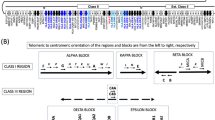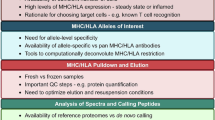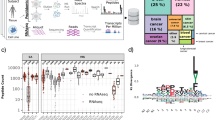Abstract
THE structure of HLA substances make it surprising that they provoke strong alloimmune responses1–3. They are composed of two chains, one invariant within the species, and the other bearing a single determinant defined by monospecific HLA sera4, or a few determinants defined by polyspecific sera4,5, and thus most closely resemble haptens on non-immunogenic carriers. If this is true generally of antigens determined by major histocompatibility systems (MHC), they could be expected to be poorly or non-immunogenic within a species. This, however, conflicts with the evidence that when present on viable tissue grafts, these antigens provoke strong humoral and cellular alloimmune responses6–8. But there is also evidence that their immunogenicity depends on additional factors9,10. Here, we present data which reconcile these seemingly conflicting lines of evidence, by showing that the induction of primary immune responses (humoral and cellular) against MHC antigens in vivo depends both on the presentation of alloantigen and on a second signal provided by a live cell. Without the latter, the small quantities of MHC antigen present on conventional allografts would not induce primary immunity.
This is a preview of subscription content, access via your institution
Access options
Subscribe to this journal
Receive 51 print issues and online access
$199.00 per year
only $3.90 per issue
Buy this article
- Purchase on SpringerLink
- Instant access to full article PDF
Prices may be subject to local taxes which are calculated during checkout
Similar content being viewed by others
References
Mitchison, N. A. Eur. J. Immun. 1, 10–27 (1971).
Cecka, J. M., Stratton, J. A., Miller, A. & Sercarz, E. Eur. J. Immun. 6, 639–646 (1976).
Goodman, J. W., Bellone, C. J., Hanes, D. & Nitecki, D. E. in Progress in Immunology 2, (eds Brent, L. & Holborow, J.) 2, 27–37 (North Holland, Amsterdam, 1974).
Sanderson, A. R. & Welsh, K. I. Transplantation 18, 197–205 (1974).
Ayres, J. & Cresswell, P. Eur. J. Immun. 6, 794–799 (1976).
Gorer, P. A. & Mikulska, Z. B. Cancer Res. 14, 651–655 (1954).
Brent, L., Medawar, P. B. & Ruszkiewicz, M., in Transplantation (eds Wolstenholme, G. E. W. & Cameron, M. P.) 6–20 (Churchill, London, 1962).
Simonsen, M. Transplant. Rev. 3, 22–35 (1970).
Medawar, P. B. in Biological Problems of Grafting (eds Albert, F. & LejeuneLedant., G.) 80 (Blackwell, Oxford, 1959).
Welsh, K. I., Burgos, H. & Batchelor, J. R. Eur. J. Immun. 7, 267–272 (1977).
Rolstad, B., Williams, A. F. & Ford, W. L. Transplantation 17, 416–423 (1974).
Bach, F. H., Bach, M. L. & Sondel, P. M. Nature 259, 273–281 (1976).
Cantor, H. & Boyse, E. J. exp. Med. 141, 1376–1389 (1975).
Batchelor, J. R., Shumak, K. H. & Watts, H. G. Transplantation 15, 70–85 (1973).
Morris, R. J., Letarte-Muirhead, M. & Williams, A. F. Eur. J. Immun. 5, 282–285 (1975).
Burgos, H., French, M. E. & Batchelor, J. R. Transplantation 18, 328–335 (1974).
Lafferty, K. J. & Woolnough, J. Transplant. Rev. 35, 231–262 (1977).
Röllinghof, M. & Wagner, H. Eur. J. Immun. 5, 875–879 (1975).
Author information
Authors and Affiliations
Rights and permissions
About this article
Cite this article
BATCHELOR, J., WELSH, K. & BURGOS, H. Transplantation antigens per se are poor immunogens within a species. Nature 273, 54–56 (1978). https://doi.org/10.1038/273054a0
Received:
Accepted:
Issue date:
DOI: https://doi.org/10.1038/273054a0
This article is cited by
-
The maintenance of self‐tolerance
Immunology & Cell Biology (1993)
-
Rat pancreatic islet pretreatment with anti-MHC class II monoclonal antibodies and culture: in vitro MLIC test response does not predict islet allograft survival
Acta Diabetologica (1993)



